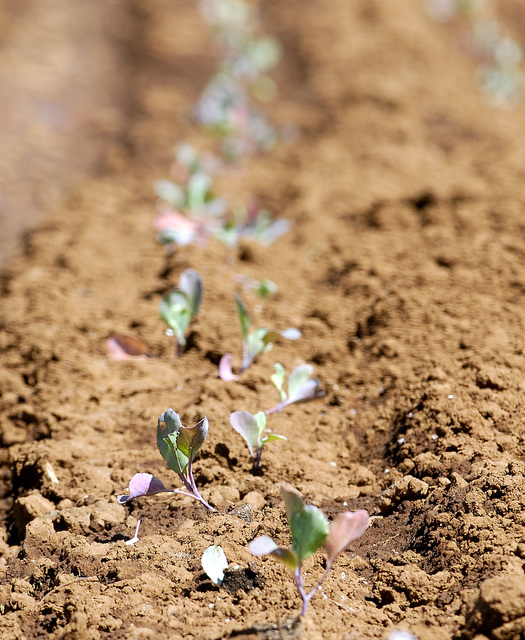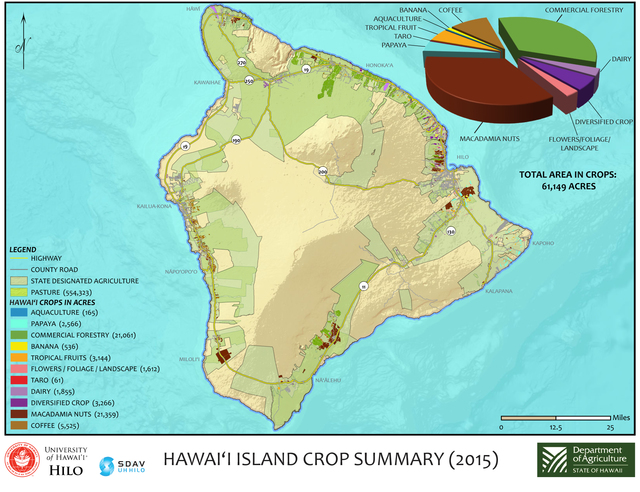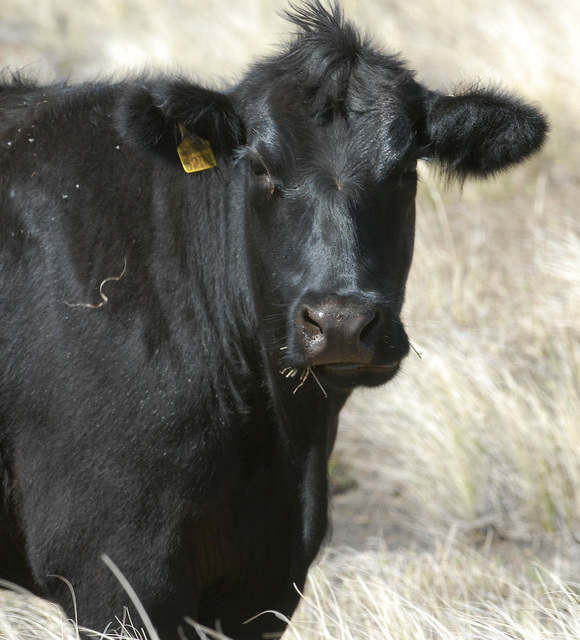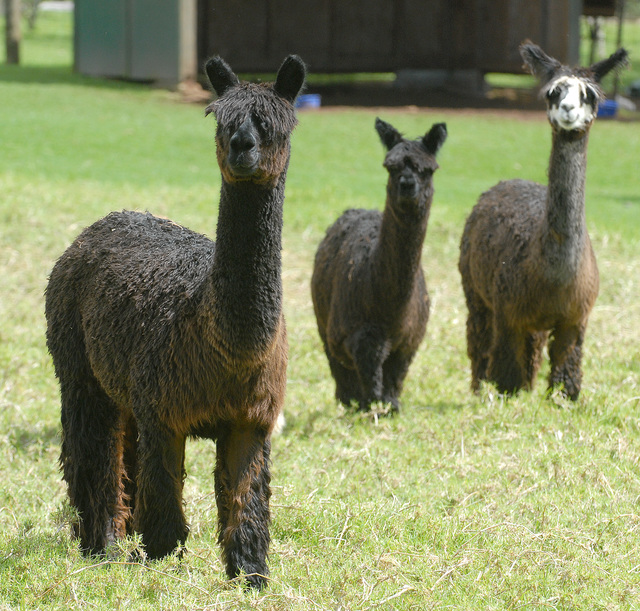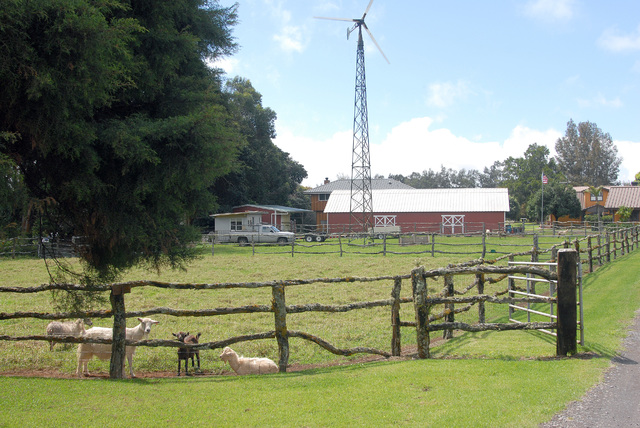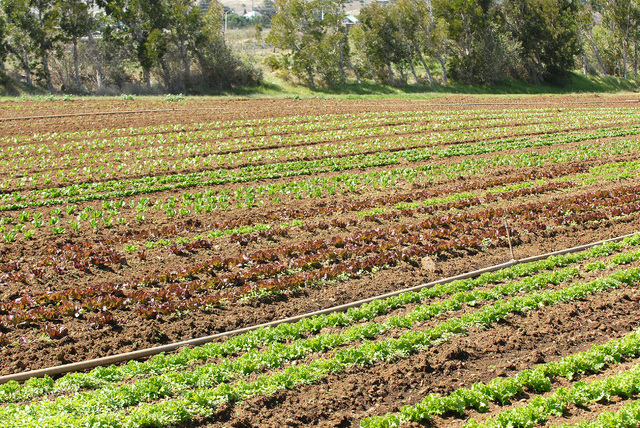The State of the State address happens annually, but it’s been more than three decades since Hawaii took stock of the State of Agriculture. ADVERTISING The State of the State address happens annually, but it’s been more than three decades
The State of the State address happens annually, but it’s been more than three decades since Hawaii took stock of the State of Agriculture.
That changed last week with the publication of a baseline study of agricultural land use, created by a team of Big Island researchers and planners and intended to help inform future decisions as Hawaii’s agriculture continues to evolve.
The study is the work of a yearlong contract between the state Department of Agriculture and the University of Hawaii at Hilo’s Spatial Data Analysis and Visualization Labs.
A baseline study is a way to take a snapshot in time, said Hilo-based land planner Jeff Melrose, who served as project manager.
“Then you can look back to other baselines, or use it as a tool to measure progress,” he said.
Melrose has been a land planner for 35 years, and previously worked on a 2012 study commissioned by Hawaii County to create a baseline study for food self-sufficiency.
The last time a baseline study for agricultural land use was created was in 1980. As far as 2015 was concerned, “Nobody really knew what was going on,” said Chris Robb, who farms 15 acres of certified organic vegetables in Waimea.
To help with the study, Danielle Downey, former apiary section chief for the Department of Agriculture and the DOA provided unpublished data from the department’s Voluntary Beekeeper Registry. The team also relied on data sources from tax reports to Google Earth to pull together the dozens of detailed maps using geographic information system (GIS) analysis, with master’s student Sylvie Cares doing the cartography and graphics.
The study looks only at acreage in use, not total production, and focuses on commercial production. It also documents water sources for the agricultural land.
“Maps can really bring people together and allow folks to all look at the same thing,” said Ryan Perroy, an assistant professor in UH-Hilo’s department of geography and environmental studies. Perroy runs the SDAV lab and served as principal investigator for the study.
The amount of lands lost from the collapse of the sugar and pineapple plantations is greater than the total amount of land currently being farmed.
“It’s just pretty mind-boggling,” Perroy said. “It’s a more complicated picture and more diverse picture now than it used to be … this gives us a snapshot in time, but it’s always moving.”
Always. Melrose had to go back into the study between a draft stage and the final stage to insert notes about the impending closure of the last sugar plantation in the state, the 36,000 acres of Maui’s HC&S operation.
The 2015 study still shows sugar as the main agricultural product but, Melrose pointed out, “the next two largest crops weren’t even mapped (in 1980).”
The seed industry, centered on Kauai, and the commercial forestry industry, centered on the Hamakua Coast, rank second and third after sugar.
“We’re kind of beyond the shutdown and recovery phase, so what you see (now) is emerging agriculture,” Melrose said.
Having regional context is key to understanding the full picture. Even on the Big Island, different districts have transitioned differently out of the plantation era.
Melrose cited the example of coffee.
“Kona has expanded fairly substantially,” he said. “But the Ka‘u farmers, who are all displaced sugar workers, got five acres for five years for free, and they put on a crop on it that (doesn’t) fruit for three years. And then they’ve kept it for 20 years, and they’ve built themselves an industry.”
And what happens on one island affects the others. When Central Oahu’s sugar plantations converted to diversified crops like vegetables, it affected the market for the same crops being grown in Waimea by farmers like Robb.
“Unless you know the setting and the circumstances, you’re not going to be able to meet an opportunity or avoid a downside,” Melrose said.
“The work that Jeff did is crucial for any long-term planning to the state,” Robb said. “If the state is sincere about sustainability, then they’ve got to start putting their money where their mouth is. … I hope legislators pay attention to it.”
The Statewide Agricultural Land Use Baseline 2015 project can be viewed at https://hdoa.hawaii.gov/salub/.
Email Ivy Ashe at iashe@hawaiitribune-herald.com.







